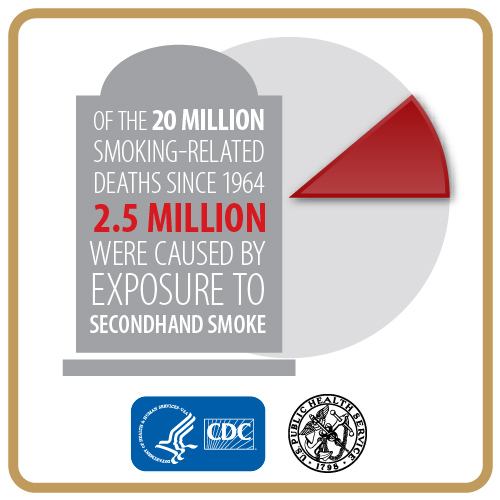This is the second in a series of articles on tobacco use and its health consequences.
Key Messages:
There is no safe level of exposure to tobacco smoke. Any exposure to tobacco smoke—even an occasional cigarette or exposure to secondhand smoke—is harmful.
Cigarettes are designed for addiction. Nicotine addiction keeps people smoking even when they want to quit.
Damage from tobacco smoke is immediate. Tobacco smoke contains more than 7,000 chemicals and chemical compounds that reach your lungs every time you inhale.
Smoking longer means more damage. Both the risk and the severity of many diseases caused by smoking are directly related to how long the smoker has smoked and the number of cigarettes smoked per day.
Even low levels of exposure, including exposure to secondhand tobacco smoke, are dangerous. You don’t have to be a heavy smoker or a long-time smoker to get a smoking-related disease or have a heart attack or stroke triggered by smoke.
There is no safe cigarette.

How Smoking Harms your Health:
1. Heart Disease
Smoking causes dangerous plaque buildup that can clog and narrow your arteries. Poisons from tobacco smoke also quickly damage blood vessels and make blood more likely to clot. This can block blood flow and lead to heart attack, stroke, or sudden death. Even exposure to secondhand smoke can trigger a heart attack or stroke in nonsmokers.
Benefits of quitting: Even if you’ve already had a heart attack, you cut your risk of having another one by a third to a half if you quit smoking. Two to five years after you quit, your risk for stroke falls to about the same as a nonsmoker’s.
2. Diabetes
Smoking is a cause of type 2 diabetes.
If you have diabetes and smoke, your risk for kidney disease is two to three times higher than if you don’t smoke.Smokers who have diabetes also have more difficulty recovering from surgery.
Benefits of quitting: After you quit smoking, you will have better control over your blood sugar levels. When you quit, you will be less likely to have heart or kidney disease, blindness, or amputations.
3. Cancer
Tobacco smoke contains toxic chemicals that can damage your DNA and lead to cancer. One out of every three cancer deaths in the US is from smoking.
People who continue to smoke after being diagnosed with cancer are at higher risk for future cancers and death.
Cancer patients and survivors who smoke are more likely to get a new primary cancer (a cancer that occurs in a different organ). They are also at higher risk for death from causes related to their cancer and from other causes.
Benefit of quitting: Quitting smoking improves the outcomes of cancer patients.
4. Fertility and Pregnancy
Smoking reduces a woman’s chance of getting pregnant and damages DNA in sperm, potentially decreasing fertility and leading to miscarriage or birth defects.
Men who smoke are more likely to have erectile dysfunction, which can affect reproduction.
Women who smoke during pregnancy have a higher risk for ectopic pregnancy, delivering their babies early, and stillbirth. Those who smoke during early pregnancy are more likely to have babies born with a cleft lip or palate.
Babies whose mothers smoke during pregnancy are more likely to have low birth weight or to die from sudden infant death syndrome (SIDS).
Tobacco smoke also damages the tissues of the unborn baby’s growing brain and lungs and could interfere with the growth of the placenta, the organ that feeds the baby in the womb. This could lead to miscarriage, premature delivery, or low birth weight.
Useful Links:
Link to the CDC fact sheet:
Click to access wynk-smoking.pdf
Link to image showing the effect of secondhand smoke on deaths in the US
